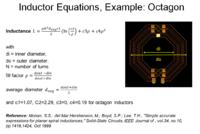Bou
Full Member level 3
Hello,
I m looking for a 2D software or calculator to determine the inductance of a printed 2 layers inductor
Usually, I work with ADS but I need another software to compare results
I tried SOnnet but the evaluation version it s limited to 30 M which is not enough in my case
If you know other softwares, would you please share theme with me
10x
I m looking for a 2D software or calculator to determine the inductance of a printed 2 layers inductor
Usually, I work with ADS but I need another software to compare results
I tried SOnnet but the evaluation version it s limited to 30 M which is not enough in my case
If you know other softwares, would you please share theme with me
10x
Last edited:
